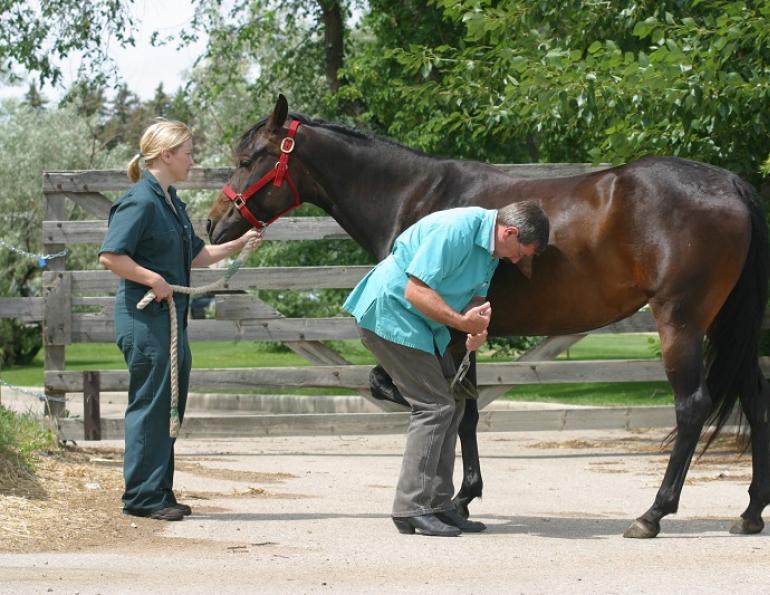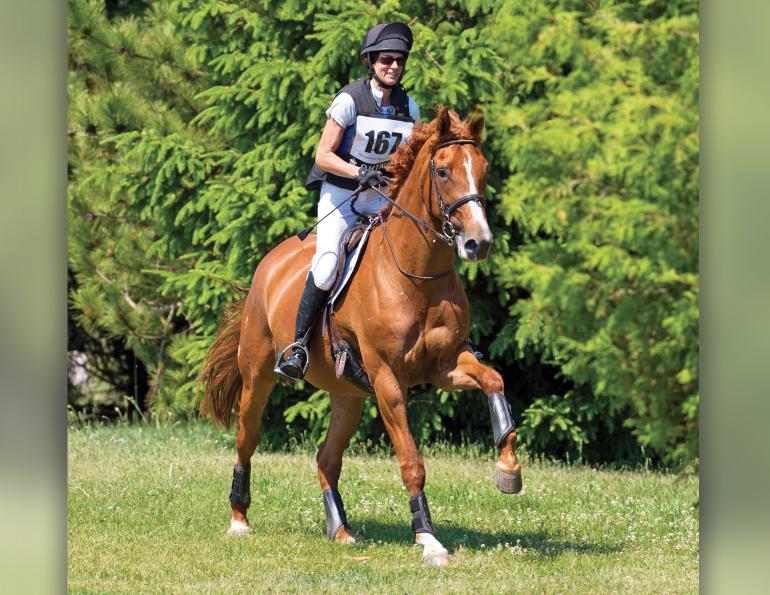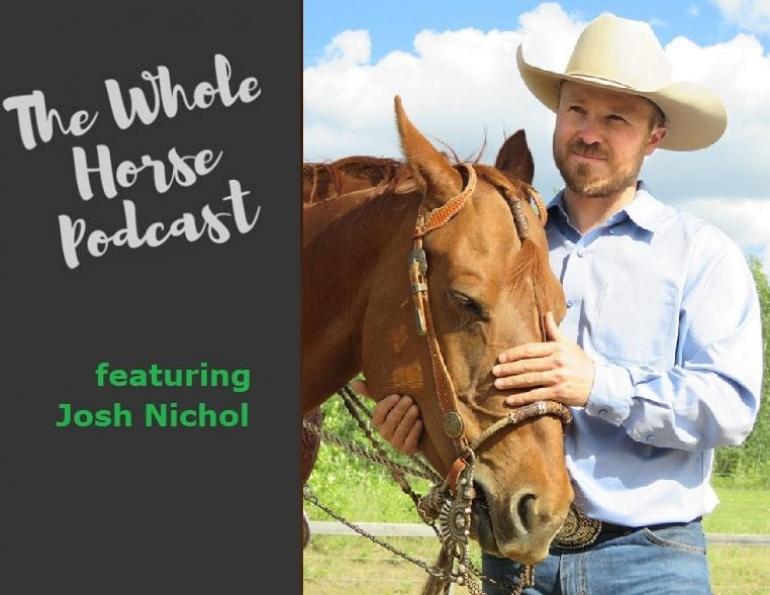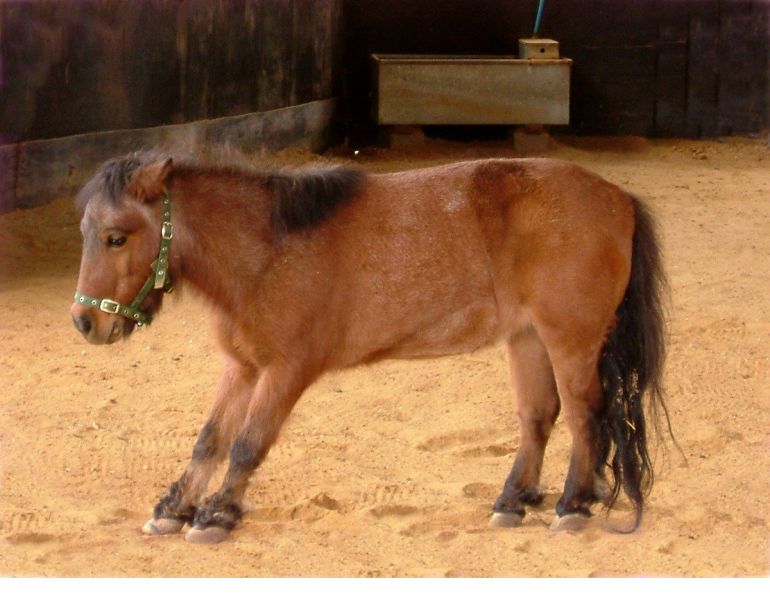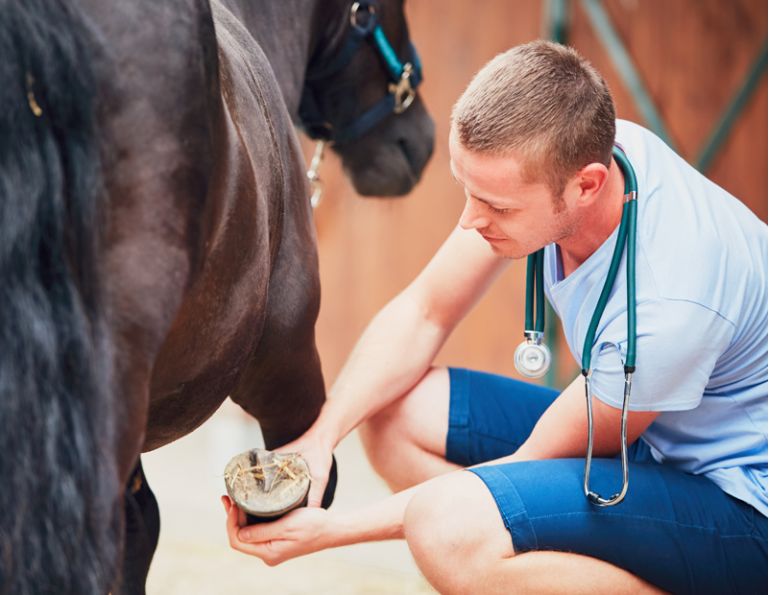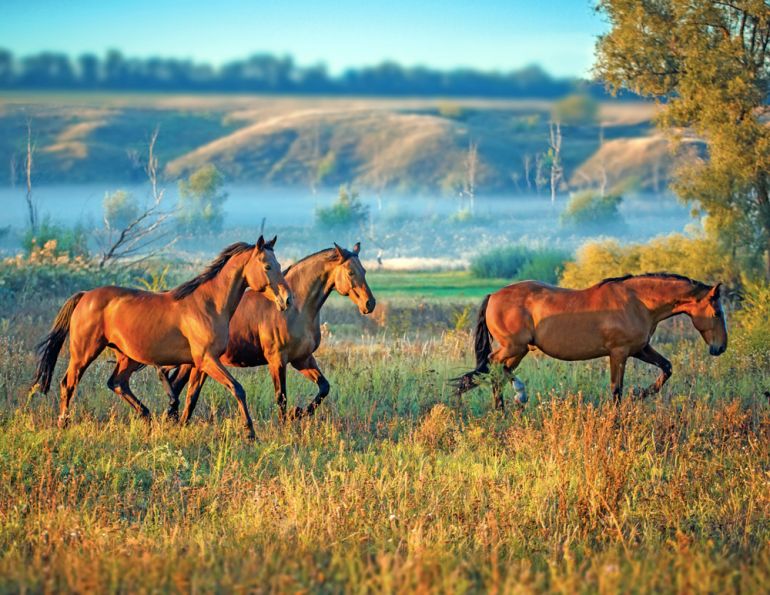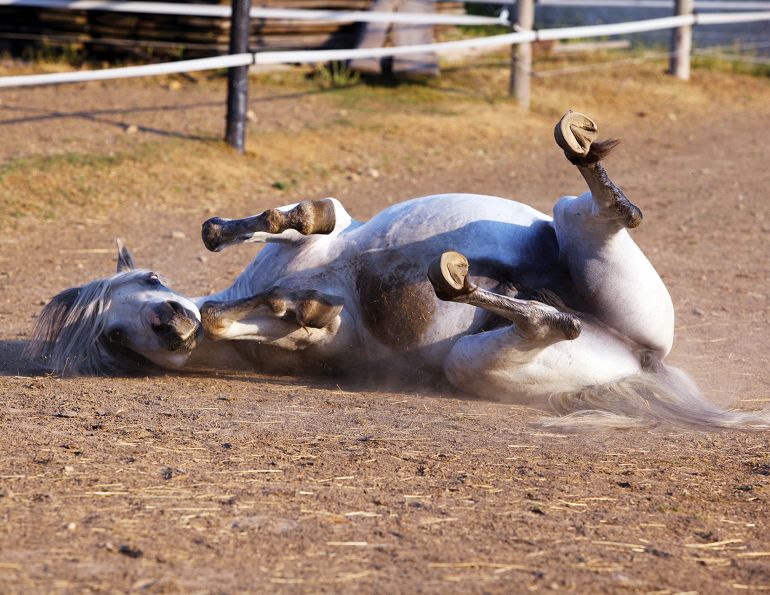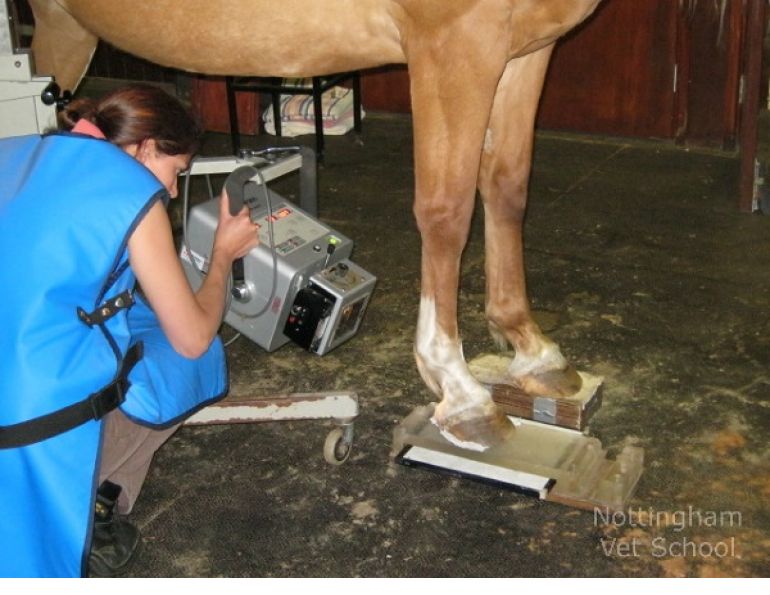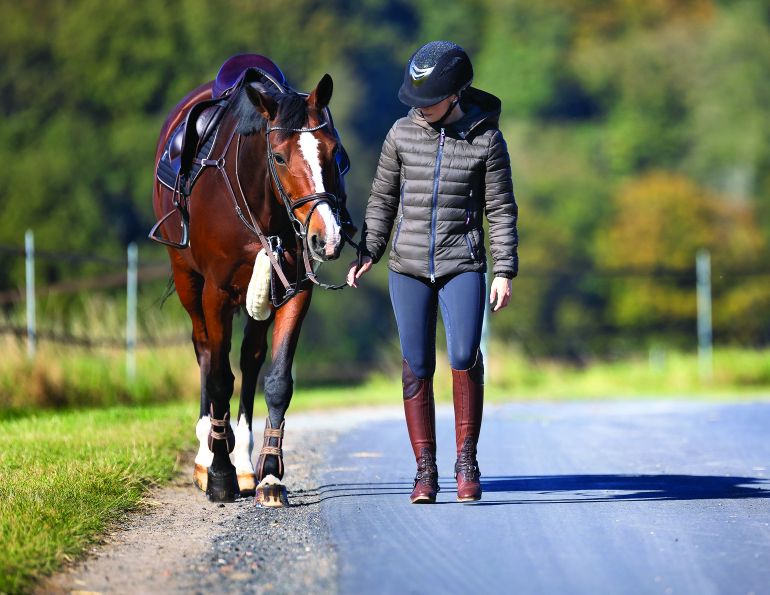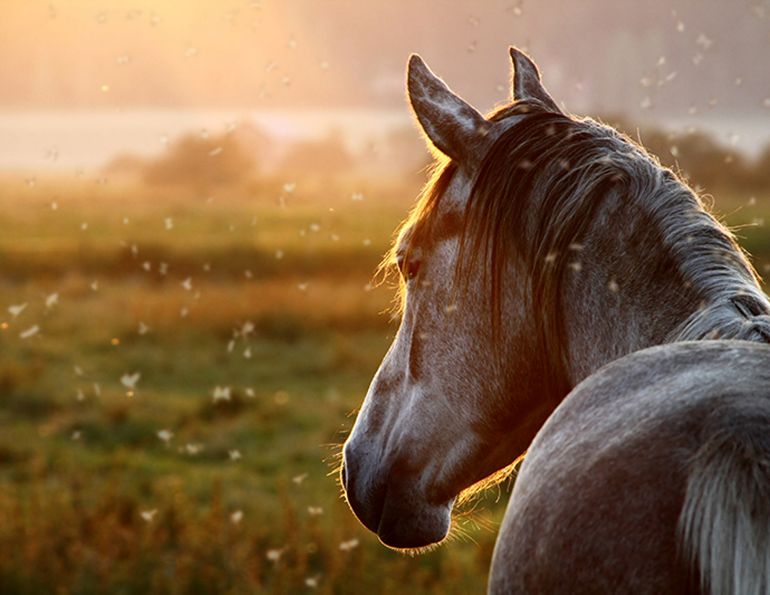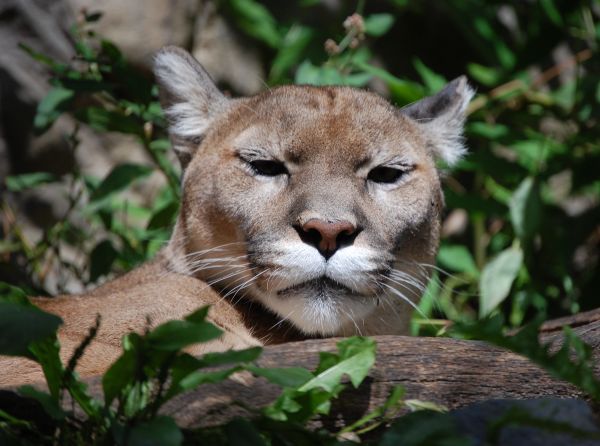By Lynne Gunville
After nearly four decades of watching the devastating impact of laminitis on horses, equine surgeon Dr. David Wilson has developed a vaccine that has the potential to save the performance careers — and lives — of horses around the world.
Laminitis (or founder) is one of the leading causes of loss in horses, right alongside colic and musculoskeletal problems.
“It’s a horror story if your horse has it [the disease], and very few horses that develop serious laminitis are ever able to recover enough to return to work,” says Wilson, a professor of large animal surgery at the Western College of Veterinary Medicine (WCVM).
Wilson and his research team at the regional veterinary college have created a vaccine that targets a common trigger for laminitis – a gastrointestinal upset caused by eating too much carbohydrate-laden grain or rich grass.
Their research was based on early studies that confirmed a grain overload leads to colitis and the presence of streptococcal bacteria which, in turn, produce proteins called exotoxins. A later study verified that two of those exotoxins could trigger the dissolution or breaking down of the equine hoof’s basement membrane — the junction between the sensitive and insensitive tissues of the hoof.
Once the membrane can no longer hold the hoof together, there’s no structural support for the coffin bone (distal phalanx) which then rotates or sinks within the hoof – a very painful process for the animal.

This radiograph shows the dramatic rotation of the coffin bone in a horse affected by laminitis. Photo supplied by Dr. David Wilson, WCVM
“The hoof structure is a very complicated dovetail system,” Wilson explains. “If you put a piece of normal hoof into a testing machine and pull the bone away from the hoof tissue, it fractures randomly. But if the hoof is exposed to the exotoxins, the dovetail becomes disconnected, and it just lets go when you pull it apart.”
Based on that information, Wilson and his team set out to build and then test a streptococcal exotoxin vaccine. After inducing a carbohydrate overload in a control group of horses as well as a vaccinated group, they confirmed that the vaccine provided protection from laminitis for 80 percent of the animals in the study.
The researchers are optimistic the vaccine will also protect horses that ingest rich pasture grass causing a similar carbohydrate overload. Grass overload is another common cause of laminitis that occurs when horses graze on lush pasture grass with high sugar content.

Grass overload is a common cause of laminitis that occurs when horses graze on lush pasture grass with high sugar content.
“The more lush the grass and the more rapidly it grows, the more likely it’s a problem,” says Wilson. “If a horse gets on that grass with a voracious appetite, it will consume enough of the highly digestible carbohydrates to upset the intestinal tract and cause low-level colitis.”
Veterinarians once used a product containing the antibiotic virginiamycin as a preventive agent for grass founder, but it’s no longer available in most countries due to international concerns about antibiotic-resistant bacteria. Owners now have limited options for prevention: They can use grazing muzzles on their horses, feed them before they’re turned out so they don’t eat as much, or feed them hay year-round and keep them on dry lots with no access to fresh grass.
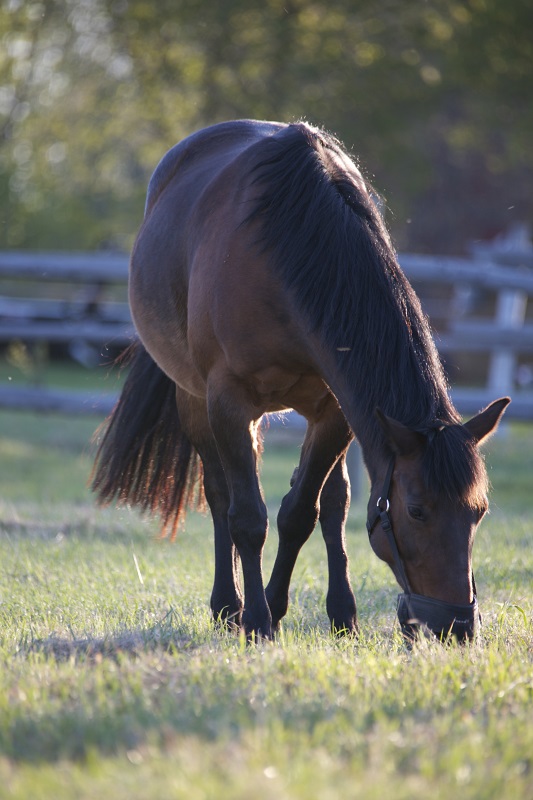
Grazing muzzles are one of the few options available to owners whose horses have suffered from laminitis or are prone to overeating on lush grass. Photo: Myrna MacDonald
Once a horse has overloaded with carbohydrates and is at risk for developing laminitis, treatment options are limited. Wilson says ice baths are the only sure method for stopping laminitis before the disease process begins. When the horse’s whole foot, preferably the foot to the knee, is kept in an ice bath between three and five degrees Celsius, the animal is able to deal with the underlying problem without developing the painful disease. However, ensuring the leg remains in the low temperature for 48 to 72 hours can be difficult for many horse owners.
Most clinicians advise trimming the foot as soon as possible to ensure that it’s in the best position to withstand weight. Other treatments include non-steroidal anti-inflammatory drugs (NSAIDs) as well as wooden shoes, plastic foam pads and deeply bedded or sand stalls.

After a horse suffers from laminitis, trimming the affected foot as soon as possible ensures that it’s in the best position to withstand weight. Wooden shoes and therapeutic pads are other treatment options. Photo: Christina Weese
Wilson is very optimistic that the vaccine will work for laminitis caused by both grain and grass overload, but it’s been challenging to attract financial backing for vaccine development. Pharmaceutical companies are reluctant to develop and market the vaccine without definite proof that it will work for grass founder.
Wilson is hoping to provide that proof through future research trials. “We’re wanting to partner with someone that has good access to the grass founder scenario. If we can hunt up a good population of horses that are at severe risk for grass founder in their environment, then we’ll look for funding.”
While the process hasn’t been easy, Wilson is determined to develop a product that horse owners around the globe can use to annually vaccinate their horses and protect them from one of the most painful diseases out there.
“If we can prevent [laminitis in] the ones that accidentally get into grain from overloading, that would be a real positive thing,” says Wilson. “But if this vaccine can [also] prevent the grass-foundered horse from developing laminitis, it would be a worldwide development.”

WCVM equine surgeon Dr. David Wilson is looking for financial backing to develop his vaccine that targets grass or grain overload, a common trigger for laminitis. Photo: Debra Marshall
Lynne Gunville of Candle Lake, Saskatchewan, is a freelance writer and editor whose career includes 25 years of teaching English and communications to adults.
This article was originally published in the July/August 2016 issue of Canadian Horse Journal.
Main Photo: WCVM equine surgeon Dr. David Wilson uses hoof testers on an equine patient during a lameness exam. Credit: Michael Raine



